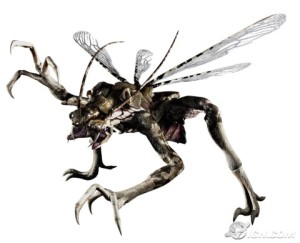WALKING DEAD SEASON 3 EP. 1 SPOILER
its not much to go on..but spoilers are already showing up online..Below is spoilers for season 3 ep 1 …as i find more i will post more..ENJOY!!
the walking dead is gonna be on this sunday!
– Time has passed by months since the end of season 2. A winter and more. Andrea still has not found the rest of the gang. That`s why they look so different from last season. Lori will give birth to the baby soon, most possible in the prison.
– Most of the start of the season takes place in the prison. Andrea shows up a few times with Michoone doing they’re own stuff.The prison is quite claustrophobic.
– The Governor does not show up during this Episode.
– Hershel gets bit at the end of the episode, but does not die during the first episode. Rick chops off his leg, like what happened to Dale in the comics.
– The end of the episode ends with Rick chopping up the leg, and 4-5 prisoners stares at Rick, Daryl, Maggie, Glenn, and Hershel with his leg chopped off. These are people from the comics, or similar.
The Walking Dead Season 3 Prison Is Making Creator Robert Kirkman Uncomfortable
The Walking Dead Season 3 is debuting on October 14, and AMC is having a blast keeping fans salivating in anticipation of the hit show’s return. Last week, we saw the release of a new poster for the season, and an even better poster celebrating the show’s ten million Facebook fan milestone, paying tribute to the film The Social Network.
Now, AMC is sharing a video tour of the prison, where much of the third season will take place. If you’re familiar with the comics, you’ll know the prison well. The tour is led by none other than Robert Kirkman, the writer and creator of the comics.
“It’s really blowing me away…I never imagined that I would be here standing in this prison,” says Kirkman. “It’s really strange to think about all of the pages coming in from Charlie Adlard – you know, seven, eight years ago – when we were doing the prison storyline in the comic book, and watching the way he drew the prison cells, and all the little nuances and stuff that we put into the comic book prison, and then to see people looking at those comics and taking inspiration from that, and then constructing it in real life, and being able to actually go onto second levels, and walk upstairs, and go in cells and stuff, it is absolutely just completely bizarre.”
“Things that are in comics should never exist in real life,” he adds. “I feel really uncomfortable here.”
Dept. of Homeland Security Warns of Impending Zombie Apocalypse
 If there’s one thing Americans love, it’s the zombie apocalypse. I don’t know why, really. Although some people think that it would be cool to blow the heads off the undead and attempt to survive in a brutal post-apocalyptic landscape, most people would get their fat asses either gnawed on by zombies or shot by a survivalist looking for supplies. The harsh reality is that most people wouldn’t survive the zombie apocalypse, but we can keep dreaming that we’re the exception – we’re all Rick from The Walking Dead.
If there’s one thing Americans love, it’s the zombie apocalypse. I don’t know why, really. Although some people think that it would be cool to blow the heads off the undead and attempt to survive in a brutal post-apocalyptic landscape, most people would get their fat asses either gnawed on by zombies or shot by a survivalist looking for supplies. The harsh reality is that most people wouldn’t survive the zombie apocalypse, but we can keep dreaming that we’re the exception – we’re all Rick from The Walking Dead.
This month is National Preparedness Month, and the Department of Homeland Security is capitalizing on the never-ending zombie craze to make people start thinking about what they would do in the event of a disaster.
According to the AP, DHS is urging citizens to prepare for the zombie apocalypse. “The Zombies are coming!” they say.
Except they’re not. At least not right now. DHS’s message is that if you’re prepared for a zombie attack, you’ll likely be prepared for a hurricane, pandemic, earthquake, or terrorist attack. That’s because all of those events have something in common – the need for shelter, food, water, etc. DHS wants emergency planners across the country to use the “zombie attack” trope to get people into the disaster preparedness mindset.
Of course, this isn’t the first time that a government organization has mentioned the z word to citizens. Last year, the Centers for Disease Control actually acknowledged zombies and released their own zombie preparedness guide.
Here’s what the CDC says would happen, on a governmental response level:
If zombies did start roaming the streets, CDC would conduct an investigation much like any other disease outbreak. CDC would provide technical assistance to cities, states, or international partners dealing with a zombie infestation. This assistance might include consultation, lab testing and analysis, patient management and care, tracking of contacts, and infection control (including isolation and quarantine).
It’s likely that an investigation of this scenario would seek to accomplish several goals: determine the cause of the illness, the source of the infection/virus/toxin, learn how it is transmitted and how readily it is spread, how to break the cycle of transmission and thus prevent further cases, and how patients can best be treated. Not only would scientists be working to identify the cause and cure of the zombie outbreak, but CDC and other federal agencies would send medical teams and first responders to help those in affected areas (I will be volunteering the young nameless disease detectives for the field work).
Even though the CDC clearly has a plan, they officially denied the known existence of zombies after a rash of cannibalism stories hit the news earlier this year.
If you have the money and truly wish to prepare for the zombie apocalypse, you can’t go wrong with this kit for the 1%.
Fly turns honeybees into little zombies
Latest woe is horrific, but is not what’s crashing bee populations
A researcher at Oregon State University has reported Oregon’s first documented case of a “zombie” fly infecting a honeybee, but he doubts that the parasite at the moment poses a threat to the bee, which is a vital pollinator of some of the state’s key crops.
Ramesh Sagili, a honeybee specialist with the OSU Extension Service, stumbled upon a belly-up bee on a sidewalk under a street light on campus in Corvallis one morning in late July, according to a press release Tuesday from OSU. He placed it in a vial in his lab, and four days later seven maggots crawled out of the bee’s neck. Almost three weeks after that, one matured into an Apocephalus borealis fly, commonly called a zombie fly because of the disoriented behavior it is suspected of causing the bees to exhibit at night.
The finding comes amid rising concern about the health of honeybees, which have been hit by a mysterious phenomenon called colony collapse disorder in which adult honeybees disappear from a hive, either entirely or in large numbers. It came to light in late 2006 when beekeepers on the East Coast began to see their honeybee colonies dwindle. The disorder has since spread to other states. A cause has not been determined, but suspects include mites, viruses, malnutrition, pesticides, a lack of genetic diversity, and stress that results from commercial hives being trucked around the country to pollinate crops.
Sagili doubts that the fly is playing a role in the widespread die-off of honeybees, which are crucial pollinators for various Oregon crops, including blueberries, pears, cherries, apples, clover, cranberries and vegetable seeds.
“It’s a stretch to say the fly is correlated to colony collapse disorder,” he said. “At this point, I don’t think it’s a threat. I don’t think it’s at the level where it can depopulate hives in large numbers.”
Earlier this year in a journal article, researchers in California became the first to document that the fly attacks honeybees. They discovered the parasite in honeybees in California and South Dakota, the only states besides Oregon where fly-infected honeybees, or ZomBees, have been reported.
The fly is known to parasitize bumblebees but little is known about its impact on them in Oregon, said Sujaya Rao, an entomologist at OSU.
Sagili hypothesizes that the fly is just now being found in honeybees because it may be trying to branch out from its other hosts when they’re not available. He added that although honeybees are widely studied, it’s possible that scientists just never saw the parasite because they usually preserve their collected bees in alcohol, which would kill the larvae and keep them from popping out.
The brownish-red fly lays its eggs inside the bees and is smaller than a fruit fly, is native to North America and has been found in Canada and states including Alaska, Georgia, Maine, Minnesota, New Mexico and New York, said Brian Brown, the curator of entomology at the Natural History Museum of Los Angeles County and an expert on the parasitic fly.
Brown said the fly has been in Oregon for thousands of years, but it just never has been found in a honeybee in the state until no





